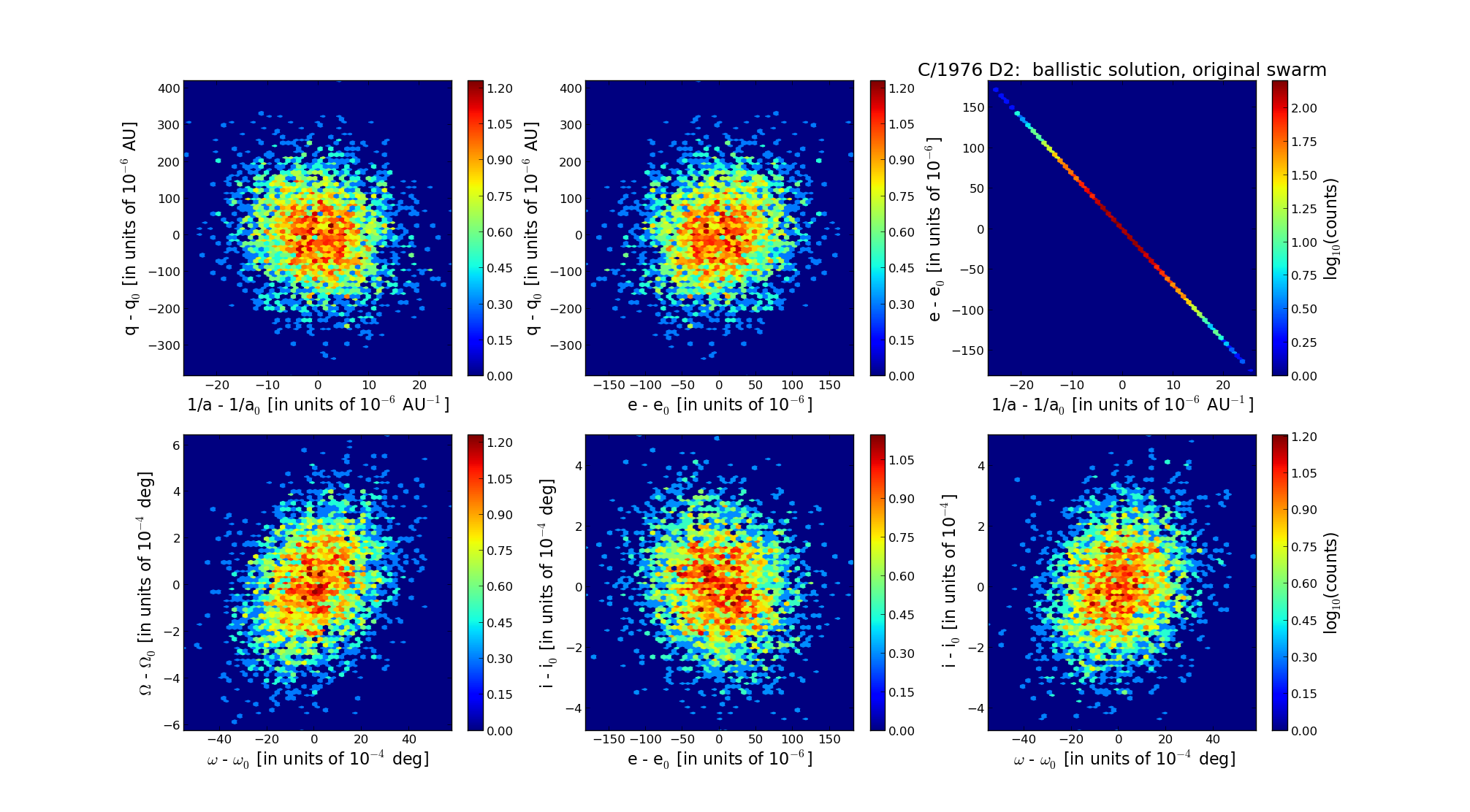| Solar System Dynamics & Planetology Group |
 |
C/1976 D2 Shuster |  |
| Solar System Dynamics & Planetology Group |
 |
C/1976 D2 Shuster |  |
| number of observations | 57 |
| number of residuals | 111 |
| data interval | 1976 Feb. 25 — 1978 Apr. 7 |
| rms [arcsec] | 1.00 |
| orbit quality class | 1a |
| Epoch (TT) | 19750128.0 | = JD 2442440.5 |
| time of perihelion passage (TT) | 19750115.546664 | ± 0.013003 |
| perihelion distance | 6.88076913 | ± 0.00009833 |
| eccentricity | 1.00210991 | ± 0.00005133 |
| argument of perihelion [deg] | 193.427853 | ± 0.001429 |
| longitude of the ascending node [deg] | 22.786964 | ± 0.000179 |
| inclination [deg] | 112.025871 | ± 0.000136 |
| inverse semimajor axis [10-6 au-1] | -306.64 | ± 7.46 |

| Epoch (TT) | 16660107 | |
| time of perihelion passage (TT) | 19750115.346261 | ± 0.013214 |
| perihelion distance | 6.88171236 | ± 0.00010043 |
| eccentricity | 0.99960808 | ± 0.00005032 |
| argument of perihelion [deg] | 193.436940 | ± 0.001461 |
| longitude of the ascending node [deg] | 22.762585 | ± 0.000180 |
| inclination [deg] | 111.987797 | ± 0.000138 |
| inverse semimajor axis [10-6 au-1] | 56.95 | ± 7.31 |
| Epoch (TT) | 22840108 | |
| time of perihelion passage (TT) | 19750115.363704 | ± 0.013254 |
| perihelion distance | 6.88351258 | ± 0.00010053 |
| eccentricity | 0.99962729 | ± 0.00005033 |
| argument of perihelion [deg] | 193.402971 | ± 0.001460 |
| longitude of the ascending node [deg] | 22.777758 | ± 0.000180 |
| inclination [deg] | 111.985520 | ± 0.000138 |
| inverse semimajor axis [10-6 au-1] | 54.15 | ± 7.31 |